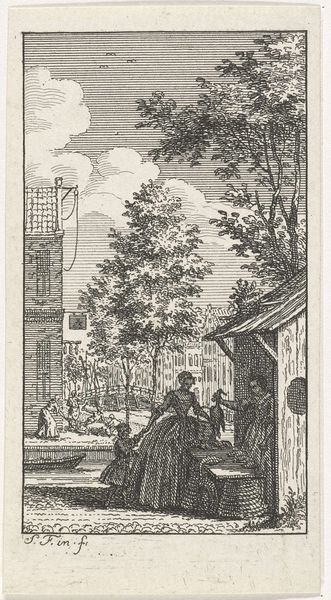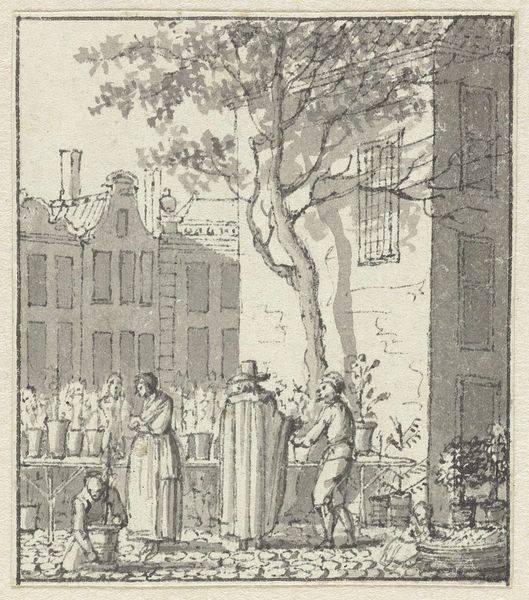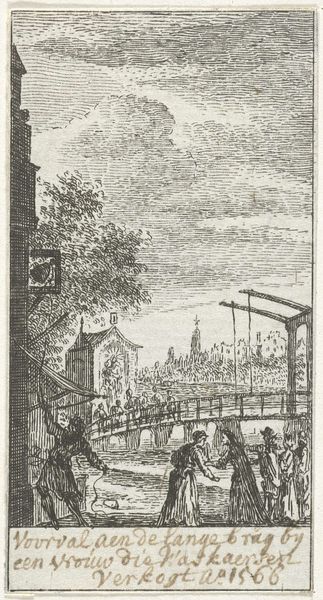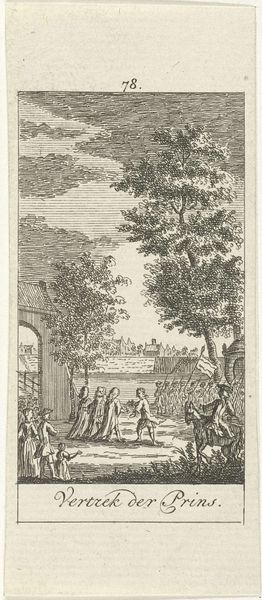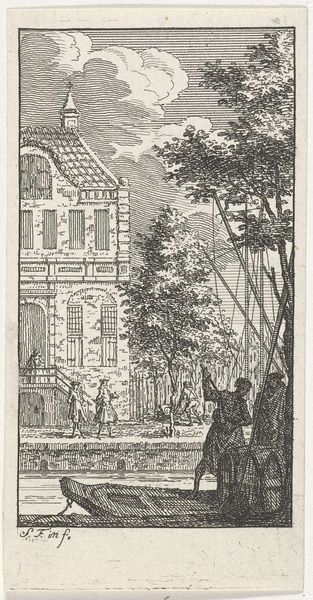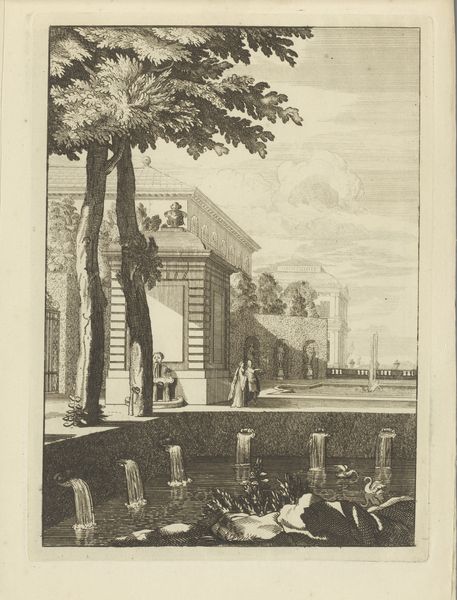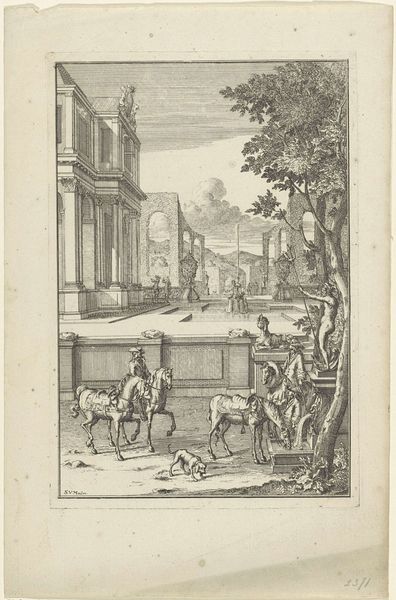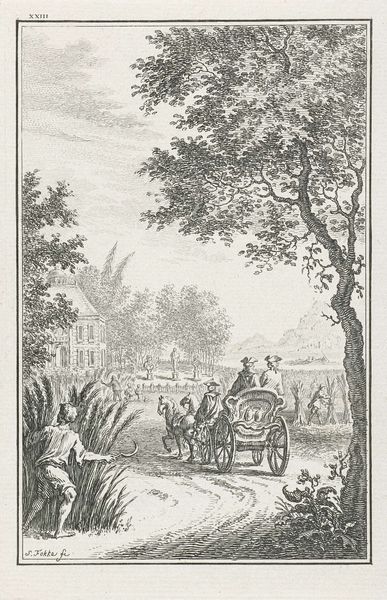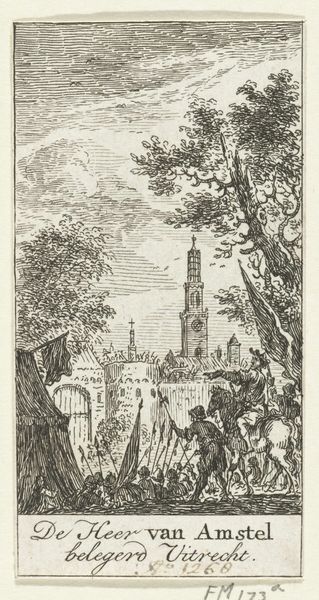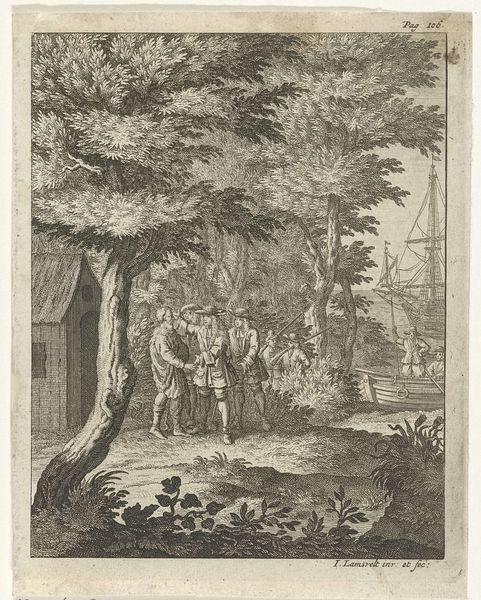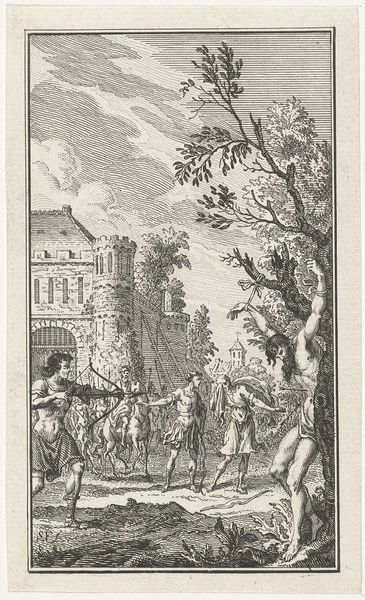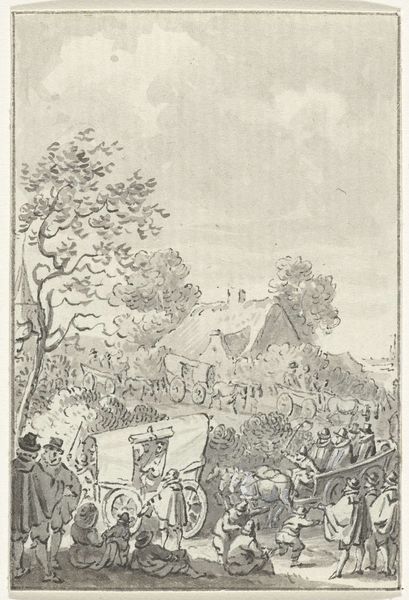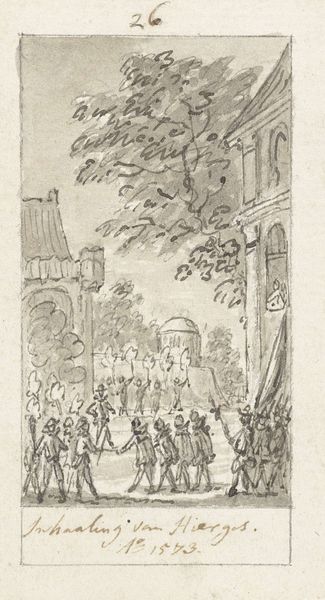
print, etching, engraving
#
baroque
# print
#
etching
#
cityscape
#
history-painting
#
engraving
Dimensions: height 104 mm, width 46 mm
Copyright: Rijks Museum: Open Domain
Curator: I see crowds, pomp, and a kind of serene takeover brewing in this one. Editor: Indeed. What you're sensing there is history in the making, quite literally. This print, crafted sometime between 1722 and 1784 by Simon Fokke, commemorates "The Reception of William III in England, 1688." It’s a combination of etching and engraving, capturing a pivotal moment. Curator: The level of detail for such a small scale! Look at the bridge's reflection in the water. It’s not just documenting an event; there’s a genuine attempt to evoke the atmosphere of the occasion. Is it the visual equivalent of "historical fan fiction," shaping collective memory? Editor: Well, Simon Fokke certainly had an agenda. Prints like this, widely circulated, played a crucial role in shaping public perception. Consider the context. By the 18th century, the "Glorious Revolution," as the English called it, had become a foundational myth, and images such as these reinforced the legitimacy of the new regime and, in Fokke’s case as a Dutch artist, perhaps celebrated a Dutch figure’s ascent on the English stage. Curator: A subtle flex by the Dutch, maybe? Beyond the political messaging, there's a definite Baroque theatricality. It feels almost stage-managed, the way everyone is arranged, the light catching the important figures... There's a bit of swagger! Editor: Precisely! The Baroque love of spectacle is evident, despite the medium's limitations. It underscores your "fan fiction" idea. It wasn't about photographic accuracy. The print transforms a messy political event into a neatly packaged narrative, accessible to everyone, not just the elites who lived through it. Curator: And what narrative does it offer now? It almost feels...quaint? There is almost an element of national pride in this detailed rendering of a powerful transfer. Editor: Today, prints like Fokke’s serve as crucial historical documents. They tell us not just about the event itself but also how that event was consciously constructed and disseminated. So, beneath the seemingly quaint veneer, it offers insights into power, propaganda, and the making of historical memory. Curator: Food for thought indeed! So much story etched into a tiny plate... Editor: Absolutely, and now that you will continue your journey through the gallery, this work hopefully inspires new paths and reflection on all kinds of cultural, social, and historical impacts on works of art!
Comments
No comments
Be the first to comment and join the conversation on the ultimate creative platform.
